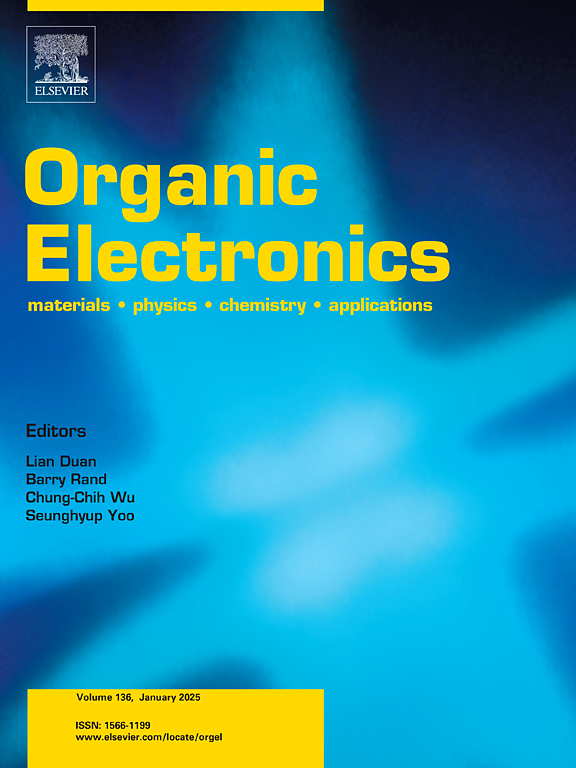Blue phosphorescent organic light-emitting diodes with extended operational lifetime through hole transport layer management
IF 2.6
4区 工程技术
Q3 MATERIALS SCIENCE, MULTIDISCIPLINARY
引用次数: 0
Abstract
Achieving higher efficiency and a longer operational lifetime is equally important yet remains a daunting task in the domain of blue phosphorescent organic light-emitting diodes (PhOLEDs). Optimizing an appropriate hole transport layer (HTL) has proven to be a potential approach for improving the performance of blue PhOLED. In the present work, we investigated a spiro-bifluorene-based SFAF HTL to develop blue PhOLEDs with high efficiency and extended operational lifetime. The spiro-bifluorene unit imparts enhanced thermal stability to the SFAF molecular structure. Further, careful management of the thickness of SFAF HTL fosters a charge balance in the emitting layer and subsequently strengthens the performance of the fabricated devices. The fabricated devices emit in the blue region, achieving an EQEmax nearing 20 %, and demonstrated excellent resistance to efficiency roll-off at higher luminance. Interestingly, the operational lifetime up to 95 % of the initial luminance (LT95) of the SFAF devices measured at 1000 cd/m2 brightness was more than double compared to that of the reference device fabricated using BCFN as HTL, which has a structure similar to the SFAF without the spiro group. The study suggests that the spiro-bifluorene-based HTLs can be excellent candidates for developing blue phosphorescent OLEDs with higher efficiency and longer operational lifetime.

通过空穴传输层管理延长使用寿命的蓝色磷光有机发光二极管
在蓝色磷光有机发光二极管(PhOLEDs)领域,实现更高的效率和更长的使用寿命同样重要,但仍然是一项艰巨的任务。优化合适的空穴传输层(HTL)已被证明是提高蓝孔oled性能的潜在方法。在本工作中,我们研究了一种基于螺-双芴的SFAF HTL,以开发高效率和延长使用寿命的蓝色oled。螺-二芴单元增强了SFAF分子结构的热稳定性。此外,仔细管理SFAF HTL的厚度可以促进发射层中的电荷平衡,从而增强所制造器件的性能。制造的器件在蓝色区域发射,实现了接近20%的EQEmax,并且在更高亮度下表现出出色的效率滚降阻力。有趣的是,在1000 cd/m2亮度下测量的SFAF器件的工作寿命高达初始亮度(LT95)的95%,与使用BCFN作为HTL制造的参考器件相比,其结构与没有螺群的SFAF相似,工作寿命增加了一倍以上。该研究表明,基于螺体-双芴的HTLs可以作为开发具有更高效率和更长的使用寿命的蓝色磷光oled的优秀候选材料。
本文章由计算机程序翻译,如有差异,请以英文原文为准。
求助全文
约1分钟内获得全文
求助全文
来源期刊

Organic Electronics
工程技术-材料科学:综合
CiteScore
6.60
自引率
6.20%
发文量
238
审稿时长
44 days
期刊介绍:
Organic Electronics is a journal whose primary interdisciplinary focus is on materials and phenomena related to organic devices such as light emitting diodes, thin film transistors, photovoltaic cells, sensors, memories, etc.
Papers suitable for publication in this journal cover such topics as photoconductive and electronic properties of organic materials, thin film structures and characterization in the context of organic devices, charge and exciton transport, organic electronic and optoelectronic devices.
 求助内容:
求助内容: 应助结果提醒方式:
应助结果提醒方式:


